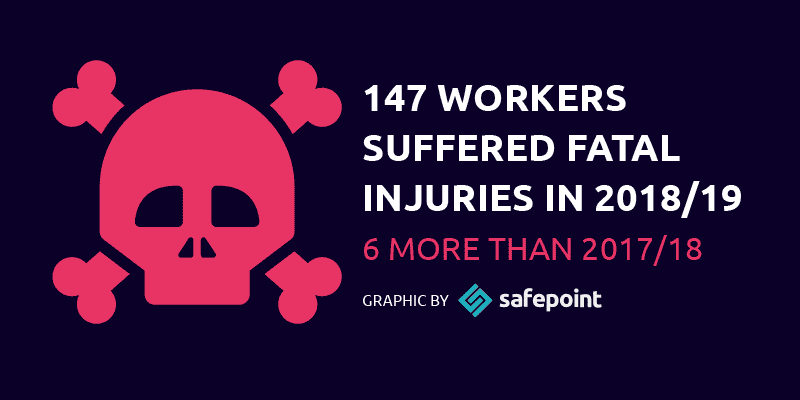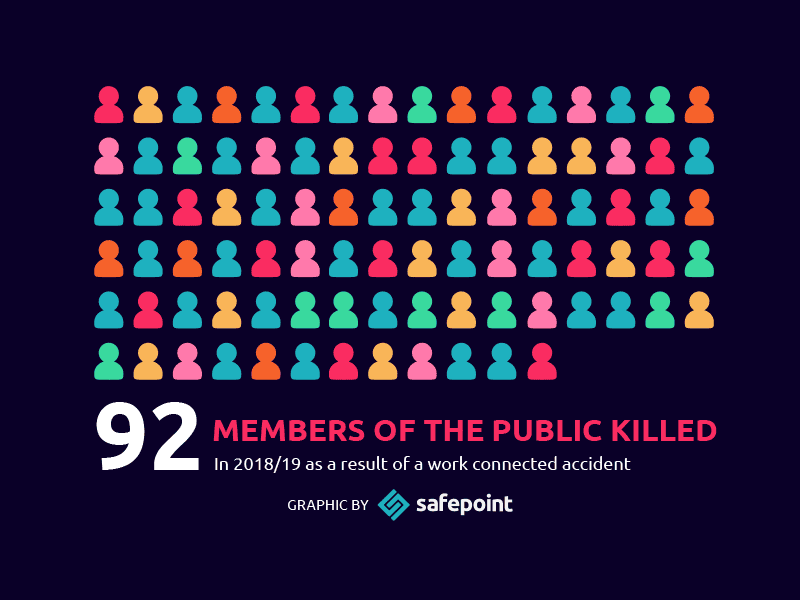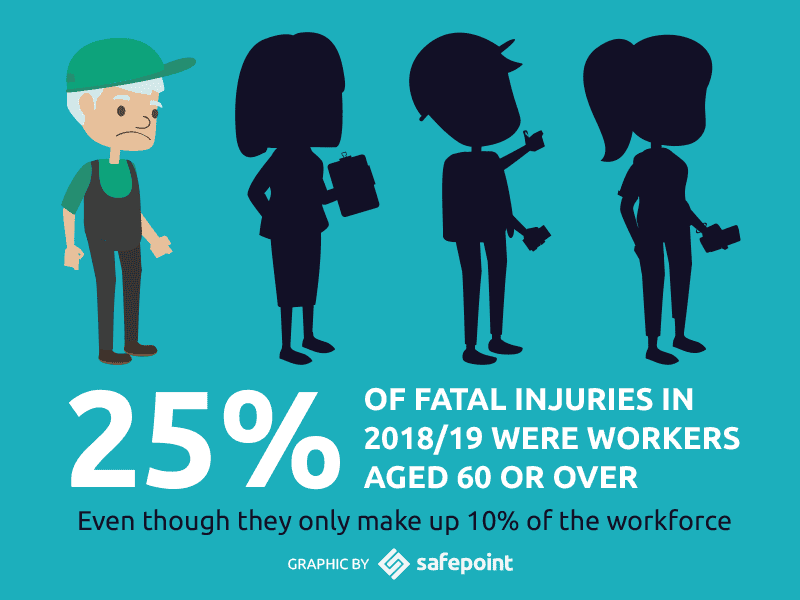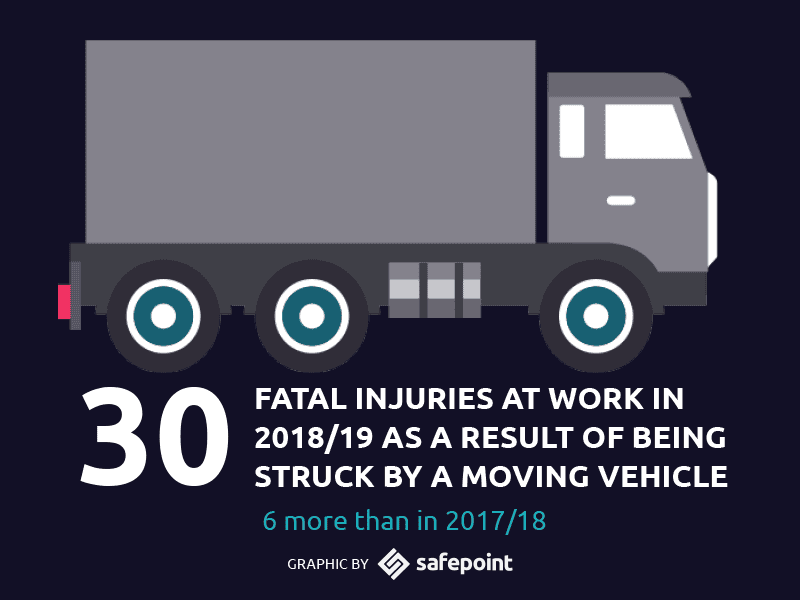
The Health and Safety executive (HSE) recently released its annual report for workplace fatalities in the UK. These statistics are provisional and cover the period from April 2018 to March 2019.
With an increase in both the number of workers killed at work in the UK and members of the public killed due to work related activities, these health and safety statistics show that more needs to be done to improve safety at work. Digesting these statistics is integral for improving lone worker safety and reducing the potential risk to your employees.

In the HSE’s 2018/19 report, agriculture, forestry and fishing come out as the most dangerous, with a rate of fatal injury 18 times higher than the all industry average. Waste and recycling aren’t far behind, with a rate of fatal injury 17 times higher than the all industry average. Agriculture’s rate of fatal injury is higher this year than the annual average since 2014, showing a spike in fatal incidents that cannot be ignored.
Construction is also one of the UK’s most dangerous industries, with a fatal injury rate four times higher than the all industry average. Encouragingly, the number of fatal injuries in construction for 2018/19 is below the annual average and at 30 fatal injuries, is the lowest number on HSE’s record.

Of all the health and safety facts to come out of the HSE report, this is one of the hardest to swallow. A total of 92 members of the public were killed in 2018/19 in accidents connected to work.
About 34% of these people were fatally injured on railways, while 25% were fatally injured in the health and social work sector. HSE notes that since 2013, “the requirement to report suicides to members of the public on railways (which accounted for a high proportion of railway deaths) was removed” and “since 2015/16, the fatality figure no longer includes ‘patient and service users’ deaths in England for premises registered with the Care Quality Commission.”
In essence, this means that these figures are representative of work place accidents only and show a worrying number of avoidable fatal injuries occurring to members of the public.

Across all industries, the risk of fatal injury is greater for those workers aged 60 and over. The rate of fatal injury steadily increases with age, though sees a sharp climb for workers after 59. Workers aged 60-64 have a rate of fatal injury twice as high as the all ages rate though more worryingly, workers aged 65 and over have a rate of injury four times higher than the all ages average rate.
Whether self employed or working with an organisation, these statistics show a clear need to improve safety for older members of the British workforce.

27% of all fatal injuries to workers in 2018/19 were caused by falling from a height. This is an increase over last year and is also a greater number than the annual average since 2014.
Being struck by a moving vehicle accounted for 20% of all fatal injuries in 2018/19, which was again an increase over 2017/18 and a larger figure than the annual average. Being struck by a moving object, being trapped by something collapsing or overturning, and coming into contact with moving machinery also cause a large number of fatal injuries: these five different kinds of accidents account for 75% of all fatal injuries over the last five years.
These health and safety facts show a concerning and continuing trend – too many workers are dying every year as a result of workplace accidents. The causes of fatal injuries for workers in the UK have been the same for years and in many cases can be mitigated or safeguarded against.
The takeaway is clear: companies across all sectors, particularly those employing lone workers or operating in particular dangerous industries need to do more to protect their staff.
Using a lone worker safety solution like Safepoint can help; by giving your workers oversight when performing tasks and peace of mind to request help in an emergency.
Award-winning safety management tools and a fully accredited response team.